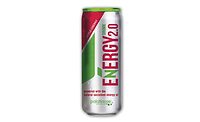Meeting Demand for Organics
By RENEE PAS
Supply and development issues top the list of concerns
for organic ingredients
Organic products are gaining
acceptance in the marketplace and ingredient
companies are taking notice. Datamonitor expects the organic market to
continue to grow roughly 20 percent annually, compared with the rest of the
food industry’s growth, which is estimated around 3 percent.
Although the organic product base is much smaller, some
ingredient companies are very optimistic about organics and are aligning
their ingredient portfolios to match the anticipated increases.
Kenneth A. Gawley, director of marketing for
Milwaukee-based Chr. Hansen, attributes a key portion of organic growth to
a greater desire among consumers to manage their health while still
maintaining the convenience of regular shopping routines.
“The average consumer doesn’t necessarily
want to have to go to a specialty health food store to get good-for-you,
natural or organic-type products if they don’t have to,” he
says. As a result, he says beverage companies are among those aggressively
allocating resources to get organic products on the shelves of the major
grocery chain stores. Chr. Hansen started marketing a line of organic
ingredients, which includes organic colors and sweeteners, this summer.
Bruce Kirk, president of ingredient company Corgins,
Laconia, N.H., also notes a greater prevalence of organic products in
grocery stores. “The crossover has already started,” he says.
Of course, organic products mean organic ingredients
and with that comes a number of issues.
Supply, development issues
One key issue to be aware of with organic ingredients
is guaranteeing consistent supply. “Availability is the tough
one,” says Kirk. “Since formulating organic versions is
expensive, the last thing you want to hear is ‘We’re
out.’”
Corgins’ product line includes organic sugar and
organic cocoa and cocoa products. Kirk says securing a consistent supply of
high-quality, food-grade ingredients is becoming increasingly difficult as
demand for organic ingredients continues. That could, in turn, cause
variations in taste for the final product.
The use of organic
ingredients can “significantly impact the product development
process, as well as the finished product and shelf life,” adds Chr.
Hansen’s Gawley.” Two examples he points to are colors and
flavors. National Organic Program (NOP)-compliant ingredient standards
limit colorants to non-synthetic sources only — in effect, natural
colors. Likewise, flavors must be derrived from non-synthetic sources,
meaning made without synthetic solvents and carriers or artificial
preservatives.
“A product developer needs to be aware that they
can only be considering products for their formulations that meet these
criteria, and therefore will need to allow for any effects on quality or
shelf life from using such ingredients,” Gawley says.
But organic does not necessarily mean shorter shelf life for beverages, Gawley points out. He says he is
asked that question a lot and attributes it to a preconceived notion about
the whole organic segment as being less stable than conventional products.
Certification assistance
While some ingredient companies have gone the route of
organic certification for ingredients, others are finding ways to assist
their clients with gaining organic certification for products rather than
certifying specific ingredients.
DSM Nutritional Products, Parsipanny, N.J., does not
certify any of its ingredients as organic.
Leonard Johnson, director of food technical services, says organic is
“a very different kind of beast.” He says his company has not
undertaken organic certification for its ingredients because the large
number of ingredients in its portfolio would make the task daunting.
Johnson does report seeing an increase in customer
requests around organics. “It seems to be quite a growing area, and
while it may still be a small part of the food industry, it seems to be
growing quite rapidly.”
The company does assist customers in gaining organic
certification for beverages. Johnson says DSM
works with customers seeking organic status by providing them the
information they need to go to state agencies and submit products as
organic. One of the more common questions he gets is about GMO (genetically
modified organism) status, since an item usually won’t gain organic
approval if a GMO-ingredient is used. Other recurring questions that arise
around the organic issue are whether ionizing radiation has been used and
whether sewage sluge is used in crops. Johnson doubts organic status would
be approved if either is involved in the ingredient supply.
Archer Daniels Midland Co. (ADM), an agricultural
processor with headquarters in Decatur, Ill., offers an organic version of
NutriSoy, a whole soybean powder that can be used to create soymilks and
other soy beverages. It is a micro-milled powder that is billed as being
versatile and bland-flavored, in addition to being organic and non-GMO.
Philip Fass, ADM global business manager for dairy and
beverage, describes NutriSoy as a low-flavor profile in a healthy soy
product. “It delivers holistic attributes of soy without the soybean
flavor,” he says.
Soy beverages are certainly one of the more common
beverage product categories for organics, although there are more organic
beverages surfacing in other segments. Ingredient companies report interest
from beverage companies making smoothie-type drinks, chilled juices and
juice drinks. There is also speculation that organics will start to show up
in the near future in horchatta-type drinks, coffee and chocolate-based
beverages.
“We have only scratched the surface,”
Gawley says. BI
Natural vs. organic
A primary difference between natural and organic
products is the degree of regulation to which they are subjected. Declaring
a product organic requires a paper trail that can be clearly followed,
while the guidelines for natural ingredients and beverages not nearly as
defined.
The organic industry is regulated by the National
Organic Program under the United States Department of Agriculture. Products
marketed as organic must meet one of the following NOP standardized
labeling criteria (percentage based on weight of organic ingredients):
“100 percent organic;” “organic,” which means it
contains 95 percent organically produced ingredients; or “made with
organic ingredients,” which means it must have at least 70 percent
organically produced ingredients. Any product with less than 70 percent
organic ingredients can identify the organic ingredients in the ingredient
statement and information panel.
There is no formal agreed-upon definition of
“natural” ingredients, although Bruce Kirk, president of
ingredient company Corgins, based in Laconia, N.H., believes the consensus
on natural is that the product has nothing artificial in it. He adds that
because of the stringent process required to label a product organic,
consumer confidence with organics is very high. “It is light years
ahead of where natural is.”




